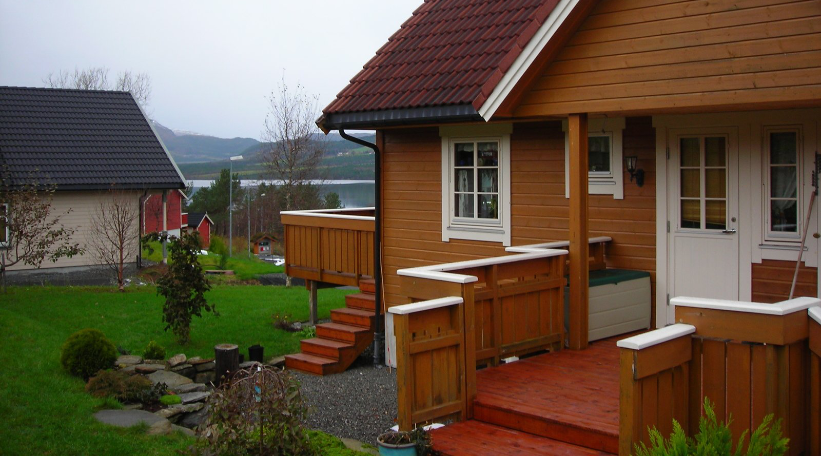Spring cleaning isn’t only for interiors. Outdoor items need your attention, too!
By Tammy Adamson-McMullen
The phrase “spring cleaning” conjures up all sorts of activities—such as sorting out closets, shampooing carpets and dusting nooks and crannies—and all likely involving the inside of your home. But home exteriors also need sprucing up this time of year, especially since you’ll soon be spending more time outdoors.
Here is a to-do list to keep on hand as you venture outside …
- De-Mold, De-Moss and De-Mildew. Rid decks, patios, porch rails, fences and outdoor furniture of mold, mildew, algae and similar unsightly invaders. Depending on the amount of grime, some surfaces may need power washing. But many can be treated effectively with an exterior household cleaner, such as Jomax House Cleaner and Mildew Cleaner or E-Z House Wash from Home Armor. Be sure that whatever cleaner you use is safe for surrounding vegetation. If not, cover vegetation with a light tarp to protect it from damage. Some products contain bleach or are mixed with bleach, so protect yourself, too, by wearing gloves and, depending on the product and your sensitivity to it, a face mask as well.
Note: One easy way to deal with mold and mildew is to use a product like Wet ‘N’ Forget, which allows you to treat surfaces and simply walk away. The product, which is concentrated and applied with a garden sprayer, works with Mother Nature (rain and wind) to clean surfaces and protect them for some time from future “greening.”
- Repair Decks and Patios. These two large surface areas probably need the most attention after winter. You’ll need to clean them first, as in Step #1, but also check for any wear and tear. With decks, look above and below the deck surface and all around the railings for loose or splintering boards and nail and sand them as needed. Then assess how your deck coating has fared over the winter. Will you be able to spot-stain and -paint it? If so, sand the areas before applying the stain or paint and be sure to use light coats. Is the deck in need of a total recoat? If this is the case, you may need to power wash it first to remove old coating residue, followed by a good sanding (typically with 80-grit sandpaper) before adding coats of paint or stain. Work in small areas on days when the weather promises to be fair and, as always, follow the coating manufacturer’s directions.
Check patios for crumbling surface concrete or loosened bricks or pavers. Remove crumbled concrete—typically crumbling concrete is just a surface blemish, with some concrete remaining beneath—and apply a concrete patch on top. (Here is an excellent source for doing this: www.askthebuilder.com/repair-crumbling-concrete.) Secure loosened bricks or pavers and level them. Depending on your patio treatment, you may need to do a mortar or joint repair. Replace any broken bricks or pavers with new ones, being careful to match the existing color.
- Inspect the Trim. Trim areas sometimes fare the worst over winter because they are so exposed to the elements. Inspect the trim all around your home—not just the framing but also the trim around windows, doors, and porches. Do you see chipped or faded paint? If so, sand these areas thoroughly and then reapply paint or stain, using light coats.
- Refurbish Outdoor Metal. If you don’t want to discard chipped metal patio furniture, lighting fixtures, railings and other metal items, try restoring them with spray paint. First, use a wire brush to remove chipping paint and rust and wipe off any residue. Then clean the surfaces thoroughly with a household cleaner and degreaser, such as Krud Kutter Cleaner/Degreaser or Zep Commercial Heavy Duty Citrus Degreaser. Once the pieces are dry, spray them with a spray paint intended for outdoor metals, such as Rust-Oleum’s Multicolored Textured paint. You might want to spray a primer or base coat first; choose a color that matches the top coat and, again, is formulated for metal. When spraying any items that will be exposed to high heat, such as metal fire pits or barbecues, use a spray paint formulated to withstand hot temperatures.
- Don’t Forget the Accessories. Planters, pots, flower boxes and other outdoor accouterments might also need a spruce-up—not just a thorough cleaning but maybe coats of paint or stain. Do your wooden flower boxes need a fresh coat or two? Could your planters use a new paint color? Would your masonry pots benefit from a sealer? Clay pots, in particular, can benefit greatly from an acrylic glossy sealer that has UV protection. The sealer not only helps protect the pots against the elements but also makes the pots easier to wipe clean when it’s time to empty and store them for winter.

 Interior Paints
Interior Paints Exterior Paints
Exterior Paints Primers
Primers Stains & Clears
Stains & Clears
 Paint Brushes
Paint Brushes Paint Roller
Paint Roller Paint Trays & Liners
Paint Trays & Liners
